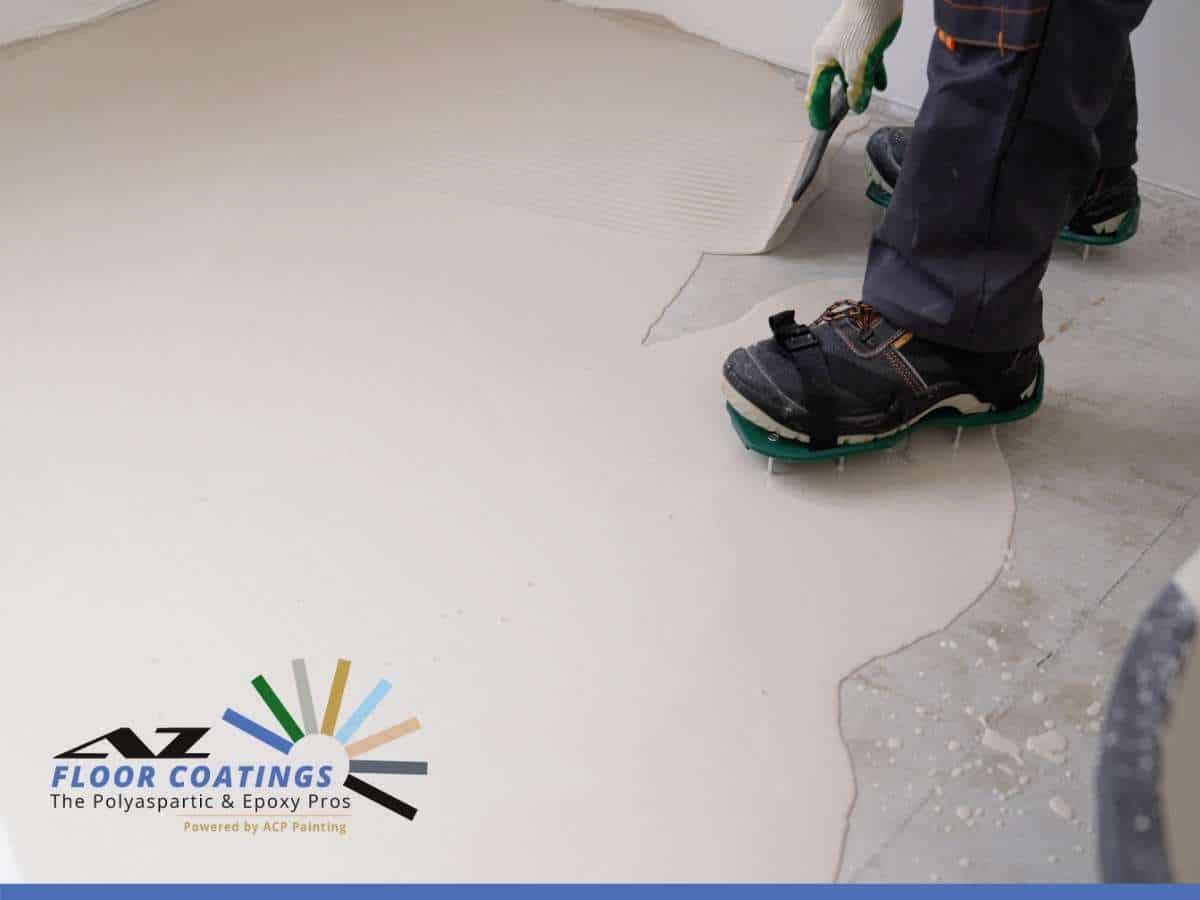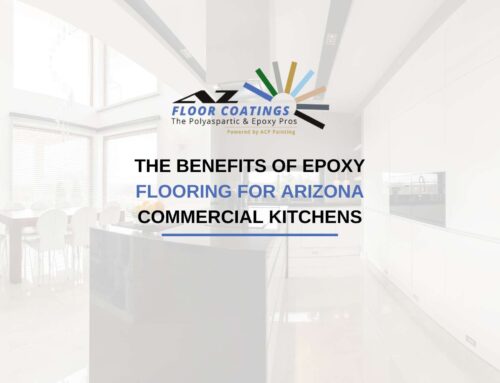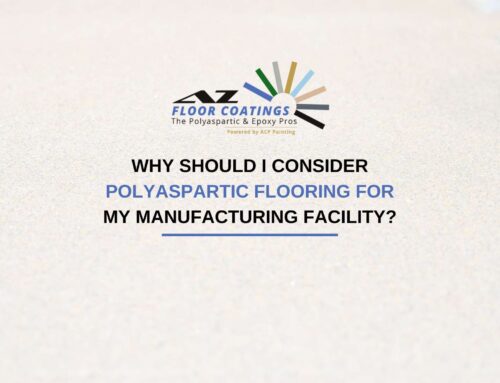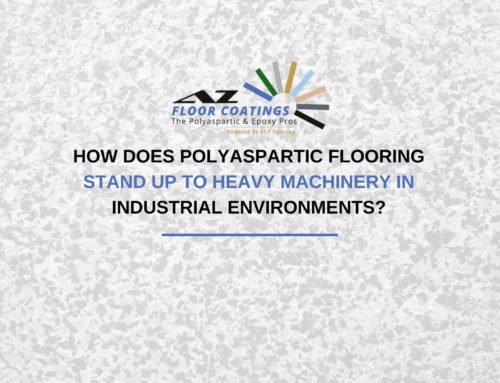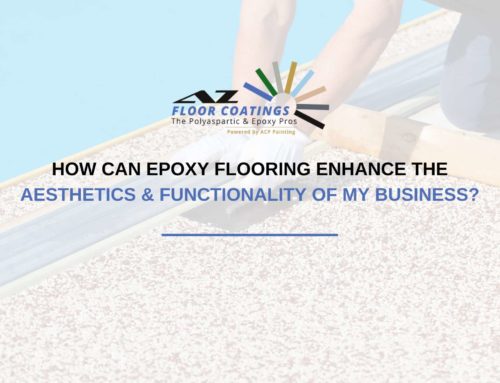Epoxy vs. Polyaspartic Floor Coatings: Benefits & Disadvantages
When searching for the best warehouse floor coating, there are many factors to consider. Do you need a cost-effective material but not at the expense of quality? Or would you prefer materials like epoxy?
We’ve assembled the information you need about Chandler polyaspartic & epoxy floor coatings to know which option is best for you. We will describe each product so you can learn its benefits and drawbacks.
With that in mind, you will be able to decide which warehouse floor coating alternatives will satisfy the esthetic, security, and durability of your warehouse requirements.
Getting To Know Epoxy Floor Coatings
The hardness, durability, and impact resistance of epoxy warehouse floor coatings make them a high-performance option frequently used for warehouse and other industrial floor applications.
Epoxy resin and a polyamine hardener are mixed before using them in epoxy floor coatings. When the components are combined, a chemical reaction takes place. When the mixture dries, the elements cross-link, creating a firm, rigid plastic covering substance that, when applied, adheres well to most of the base layers (like concrete).
What Are The Benefits Of Epoxy Floor Coatings?
Epoxy flooring benefits include hardness, durability, and impact resistance, which make them very popular in industrial facilities like warehouses, logistic centers, and other locations that experience heavy mechanical traffic, such as forklifts.
Another advantage of epoxy floor coatings is their resistance to chemical products such as solvents, acids, oils, grease, bleach, cleansers, and others. As a result, Maricopa epoxy floor coatings are popular in the automobile industry.
Epoxy warehouse floor coatings are also attractive and cost-effective. Epoxy coatings are beautiful and durable, with a high shine and a wide range of colors and finishes, such as granite, metallic, or marbled.
They can be applied directly to pre-existing concrete, wood, or steel at a reasonably priced per square foot. Therefore, epoxy flooring coatings are an affordable, long-term solution.
What Are The Disadvantages Of Epoxy Floor Coatings?
Despite these numerous benefits, epoxy has a few disadvantages to consider before putting it in a garage or warehouse.
Before applying the epoxy floor coating, the floor must first be properly cleaned to get rid of any remnants of grease, oil, or solvents. Additionally, any surface damage, such as cracks, must be fixed. This level of planning might pile up and take a lot of time.
Wet epoxy smells horrible during application, and the fumes can be harmful, especially to asthmatic people. Therefore, it is imperative to use protective eye and mouth covering while applying, and the location should be as well-ventilated as possible.
Depending on the type of epoxy floor coating used and the quantity, the finished surface will need between 2 and 7 days to cure.
Epoxy is not UV resistant and should never be used where direct sun exposure occurs. In addition, Epoxy wil fade over time even under commercial, UV producing lights.
Gilbert epoxy floor coatings are an excellent option, but you should not overlook their disadvantages.
Getting To Know Polyaspartic Floor Coatings
Polyaspartic is a solvent-borne two-component polyurethane coating similar to polyurethane. Polyaspartic coatings were initially applied to steel girders for bridges because of their outstanding corrosion resistance.
But, during the 1990s, polyaspartic floor coating grew significantly in popularity. It is applied similarly to epoxy and polyurethane coatings, making it a very flexible substitute for commercial and industrial floor coating.
What Are The Benefits Of Polyaspartic Floor Coatings?
The main advantage of using a polyaspartic flooring coating is that, like paint with priming, it can serve as both a flooring system and a topcoat. As a result, polyaspartic floor coatings can do in a single coat what epoxy and polyurethane can in two or more coatings. Applying polyaspartic takes less time and effort. However, for most applications AZ Floor Coatings applies a minimum of 2-3 coats for maximum protection.
Another advantage of a polyaspartic floor coating is the absence of volatile organic molecules (VOCs). Therefore, it is a better option for spaces with less ventilation, such as storage tanks or smaller industrial facilities, in addition to being more environmentally friendly than the other systems.
Finally, a polyaspartic floor coating is designed to dry faster, allowing businesses to resume operations sooner.
Maricopa polyaspartic floor coatings are another excellent option for your warehouse, especially if you want to resume activities as soon as possible.
What Are the Disadvantages Of Polyaspartic Floor Coatings?
A polyaspartic flooring application, like epoxy floor coatings, requires meticulous floor cleaning and preparation to guarantee integrity. Also, don’t use polyaspartic flooring in areas where “breathable” concrete sealer is required.
Choosing The Best Flooring
Consider your flooring requirements carefully if your company runs in a warehouse or other demanding workspace. You require a solution that is as tough as your business.
Polyaspartic is your choice if you want a convenient material. Remember, it serves as both a flooring system and a topcoat.
However, if you prefer something more resistant to chemical abrasion, epoxy might be a better option. It all depends on your needs and the type of work in your warehouse.
Contact The Experts
If you need high-quality warehouse epoxy floor coating, contact AZ Floor Coatings: The Polyaspartic & Epoxy Pros. We provide the most modern floor coating products to improve the appearance and safety of your commercial space in Arizona.
We also offer numerous services to guarantee an excellent result for your concrete floor. Get in touch with our team to request a quote and start your project ASAP!
AZ Floor Coatings
19342 N Maricopa Rd
Maricopa, AZ 85139
Phone: (480) 764-3556
Email: [email protected]

